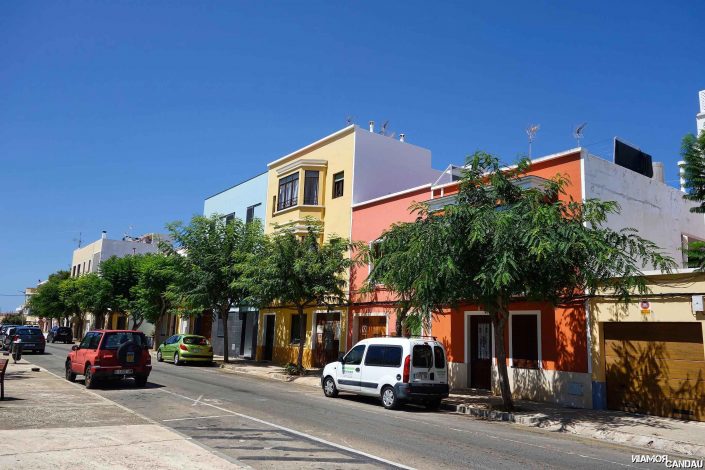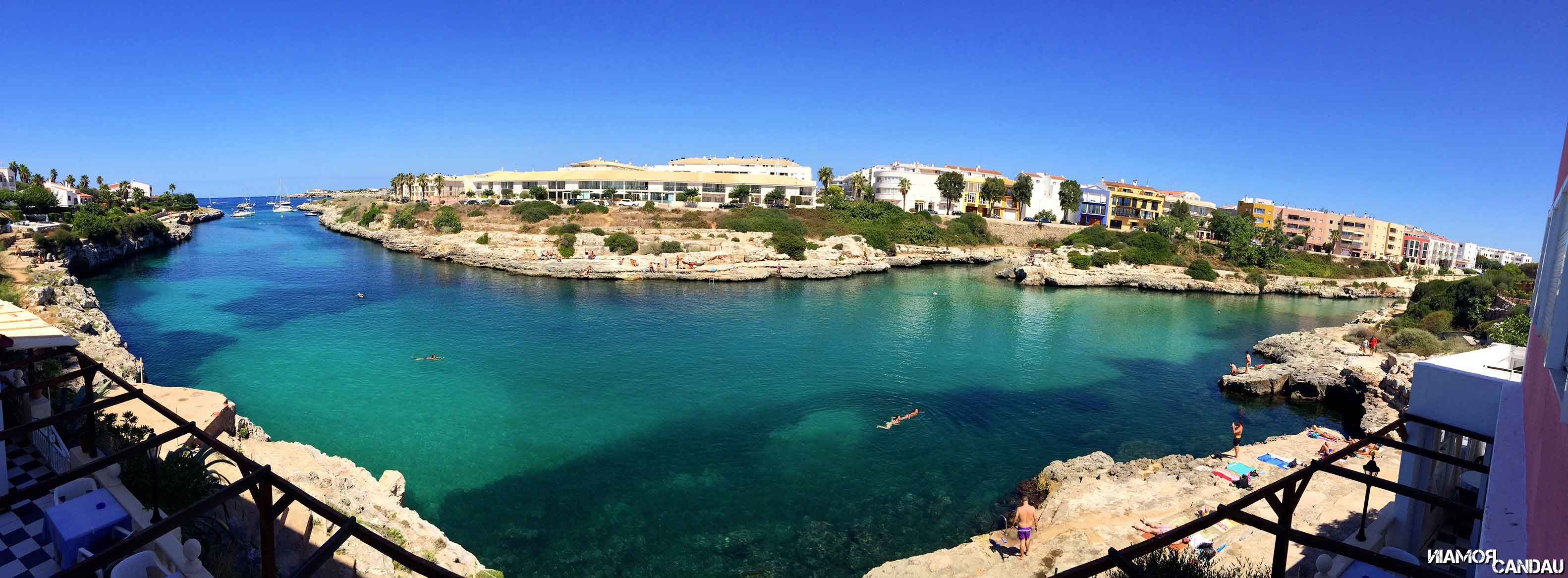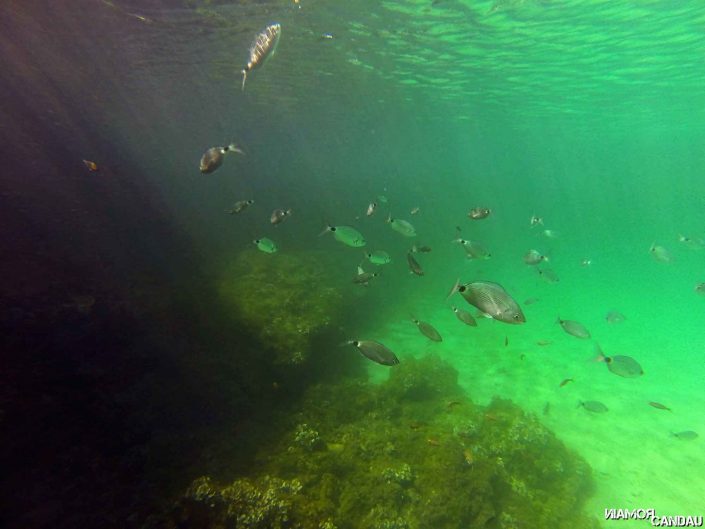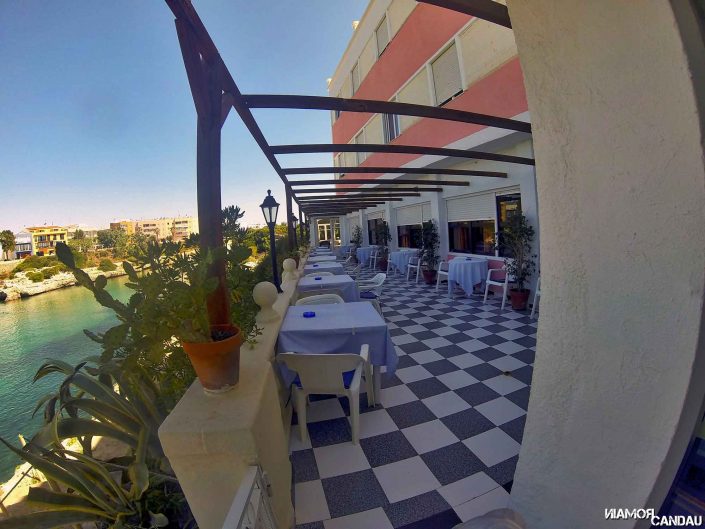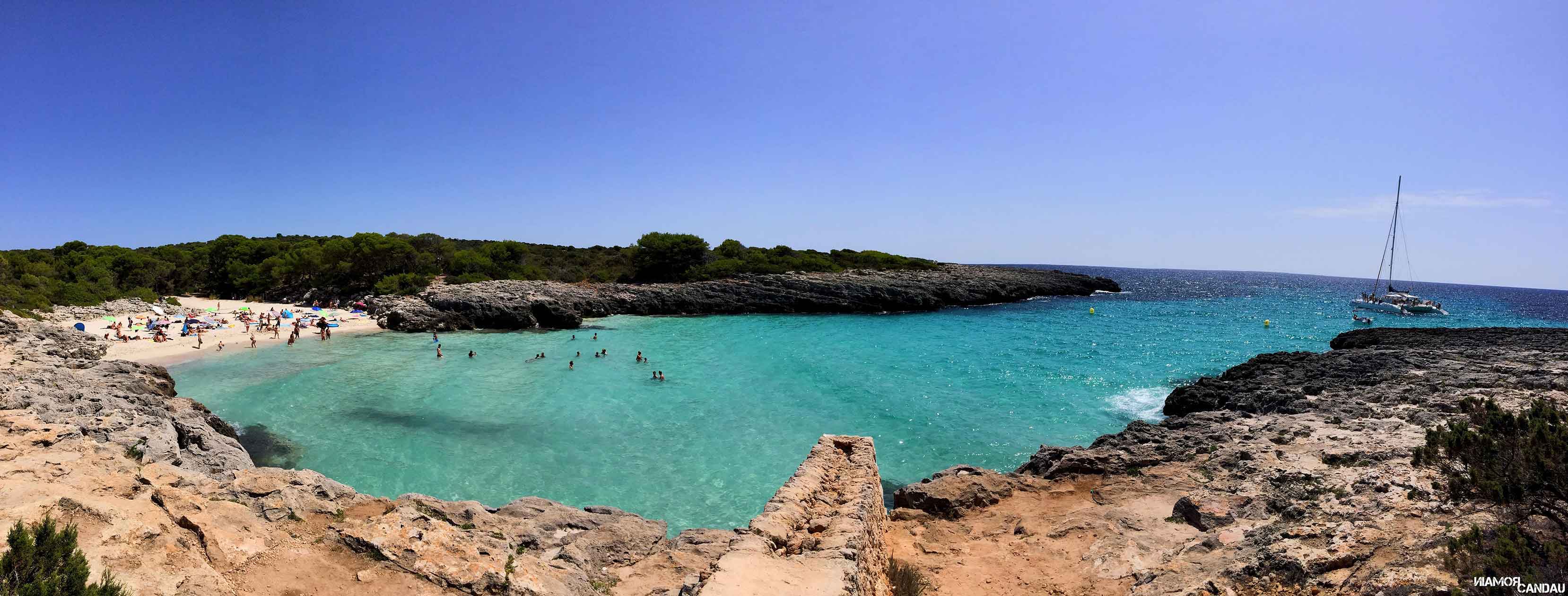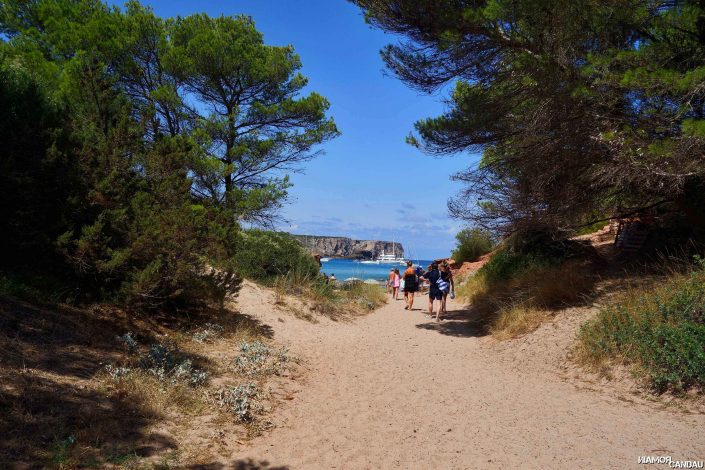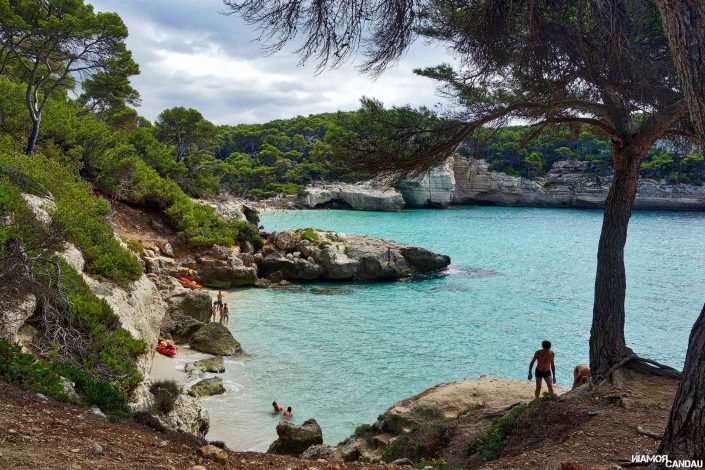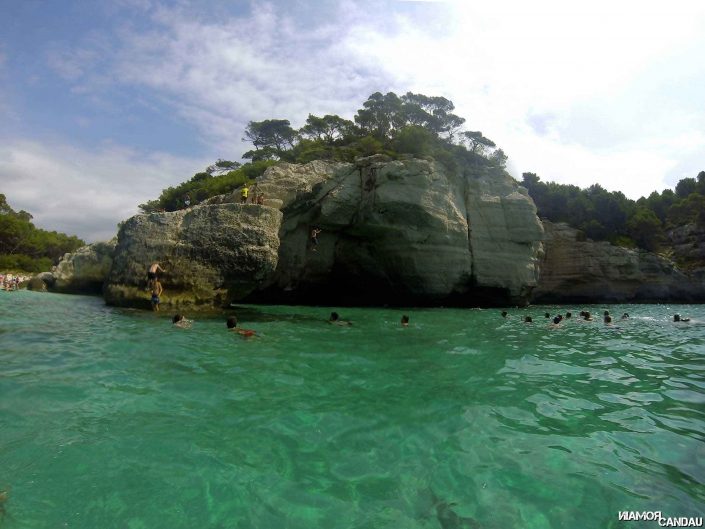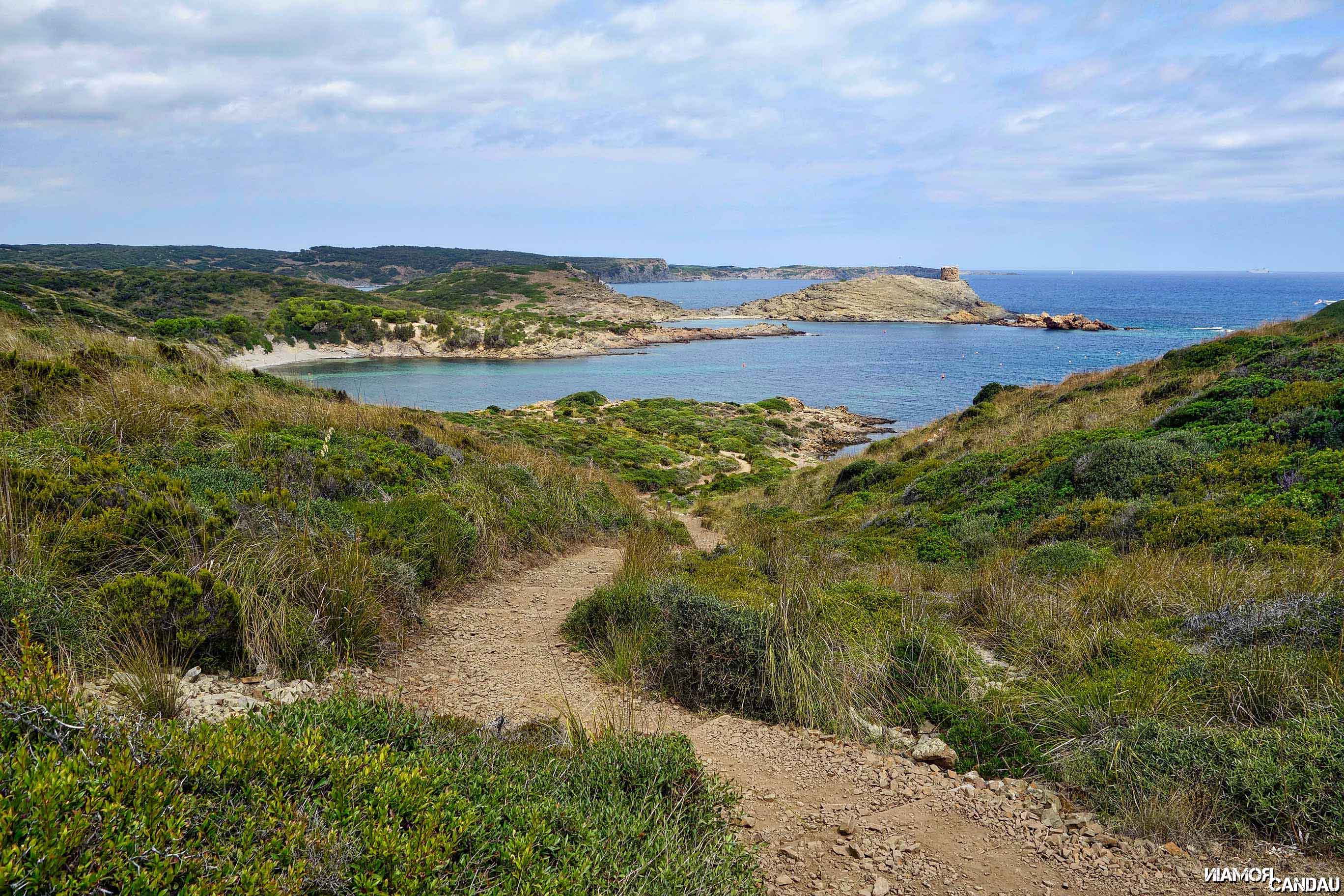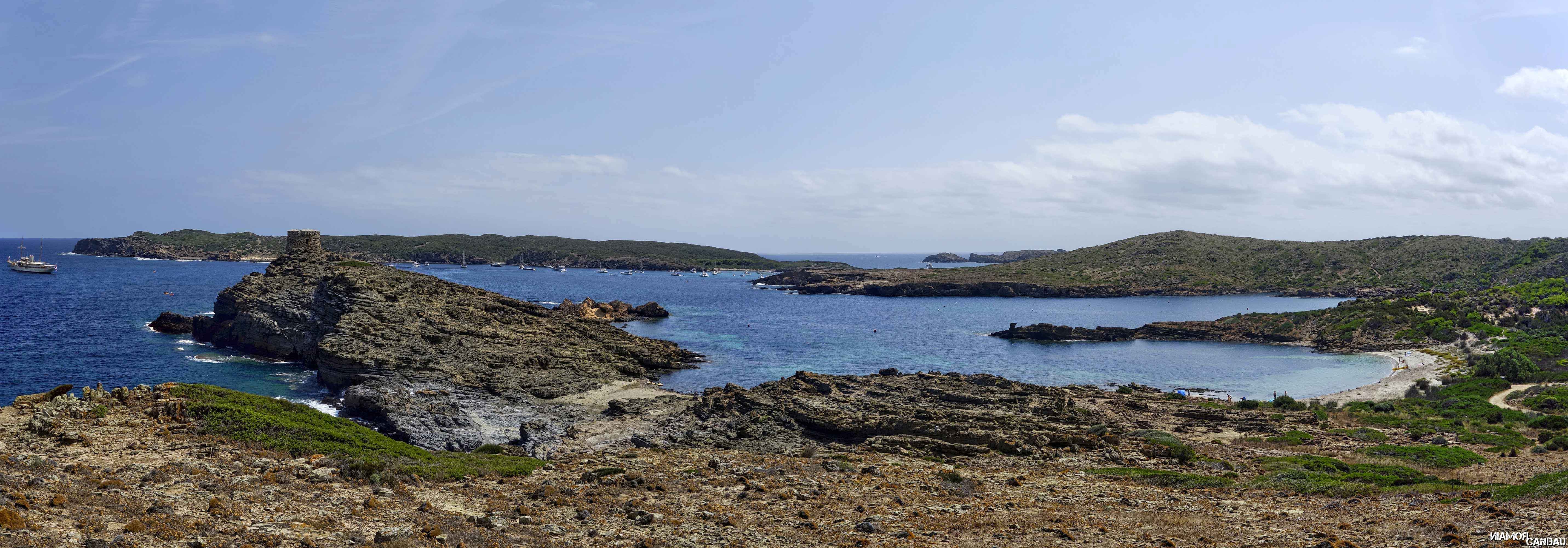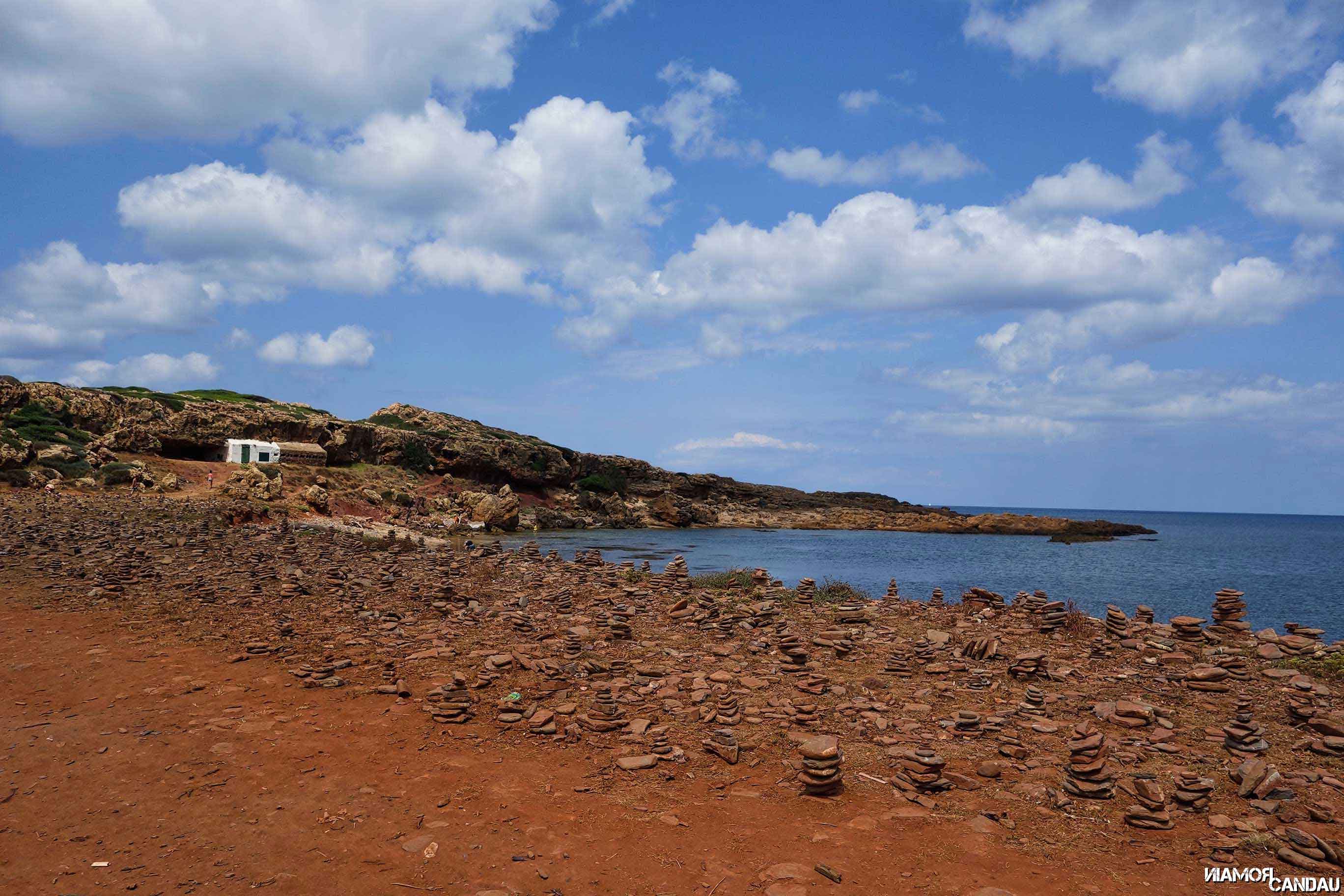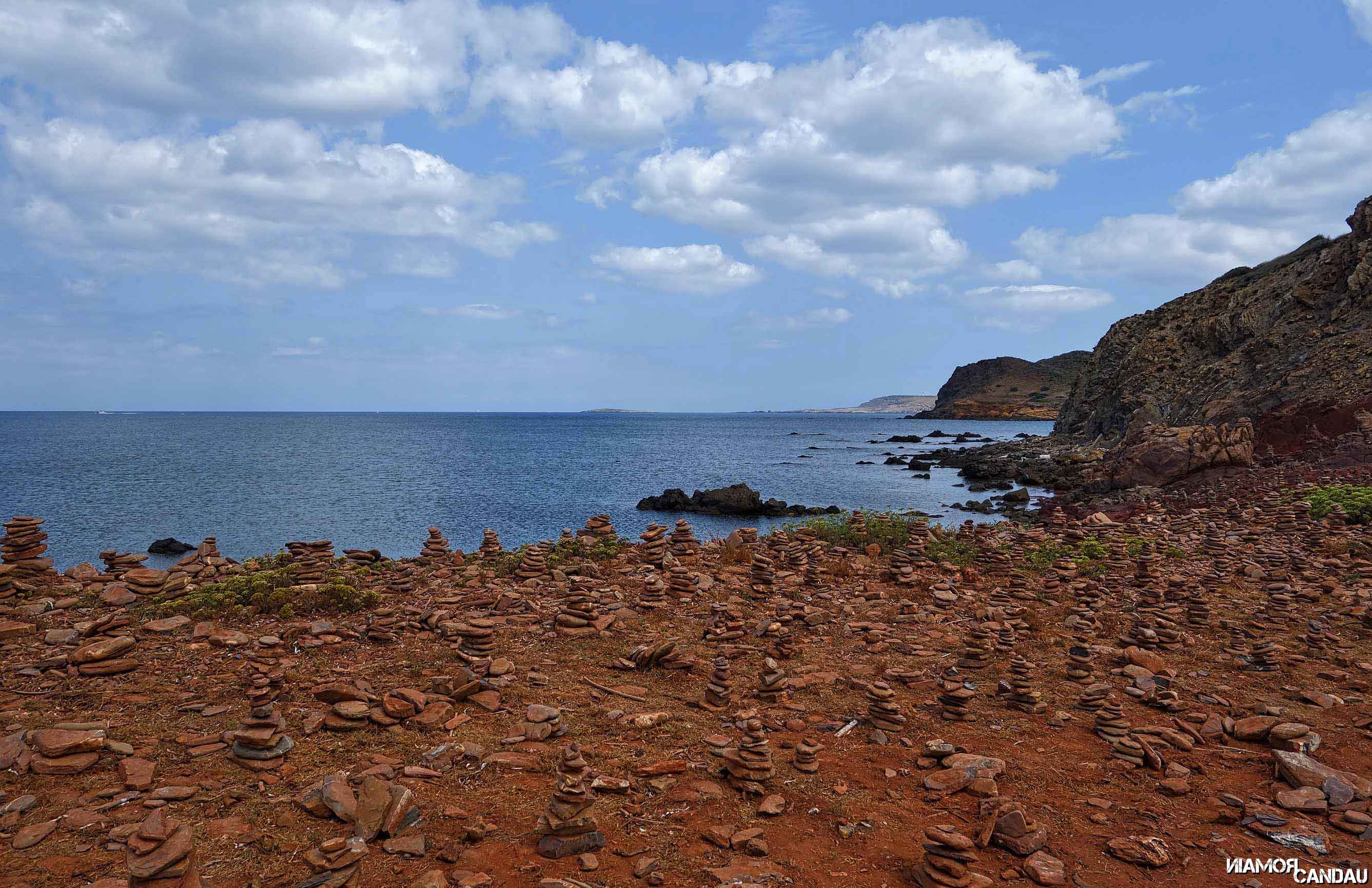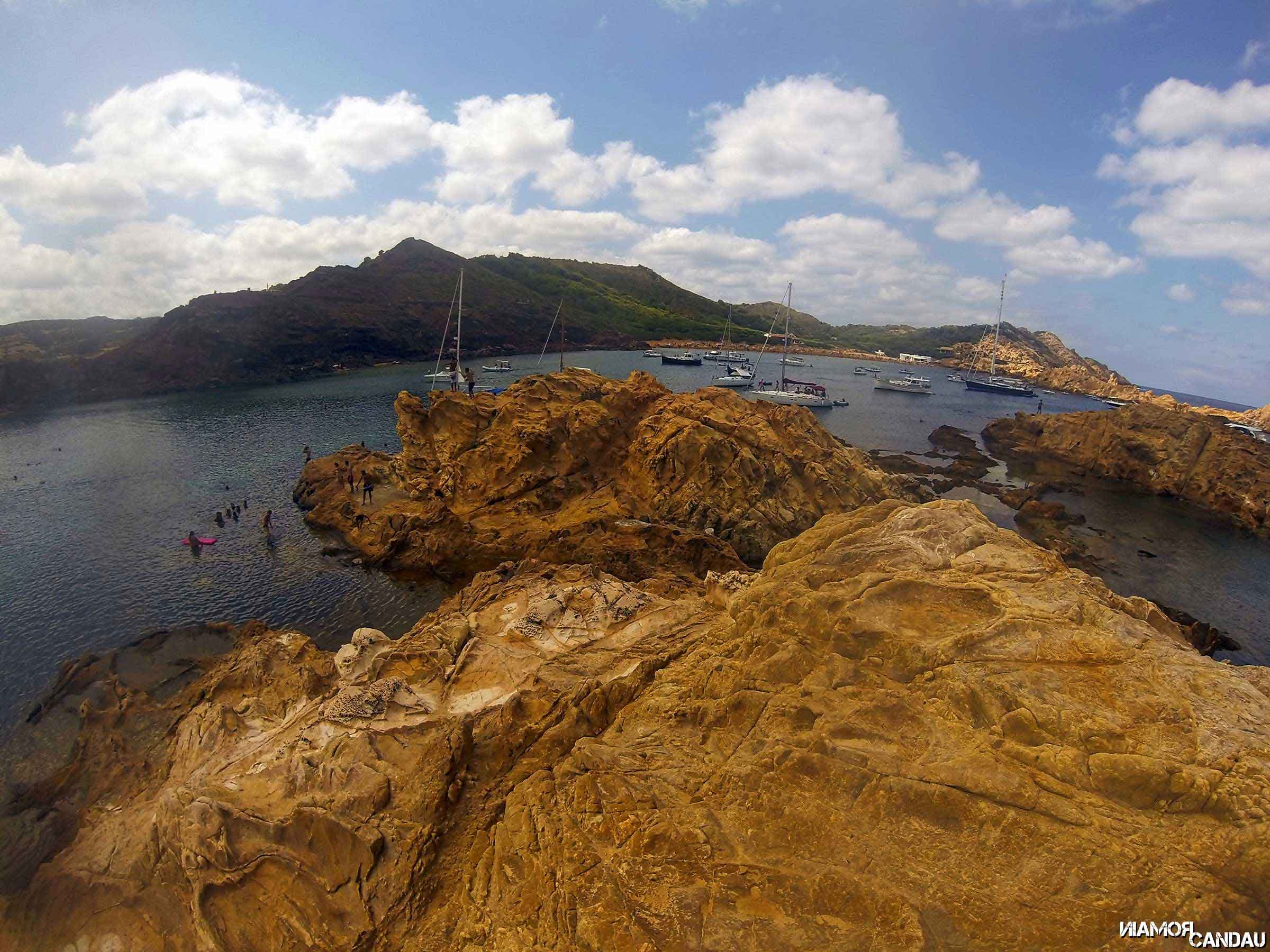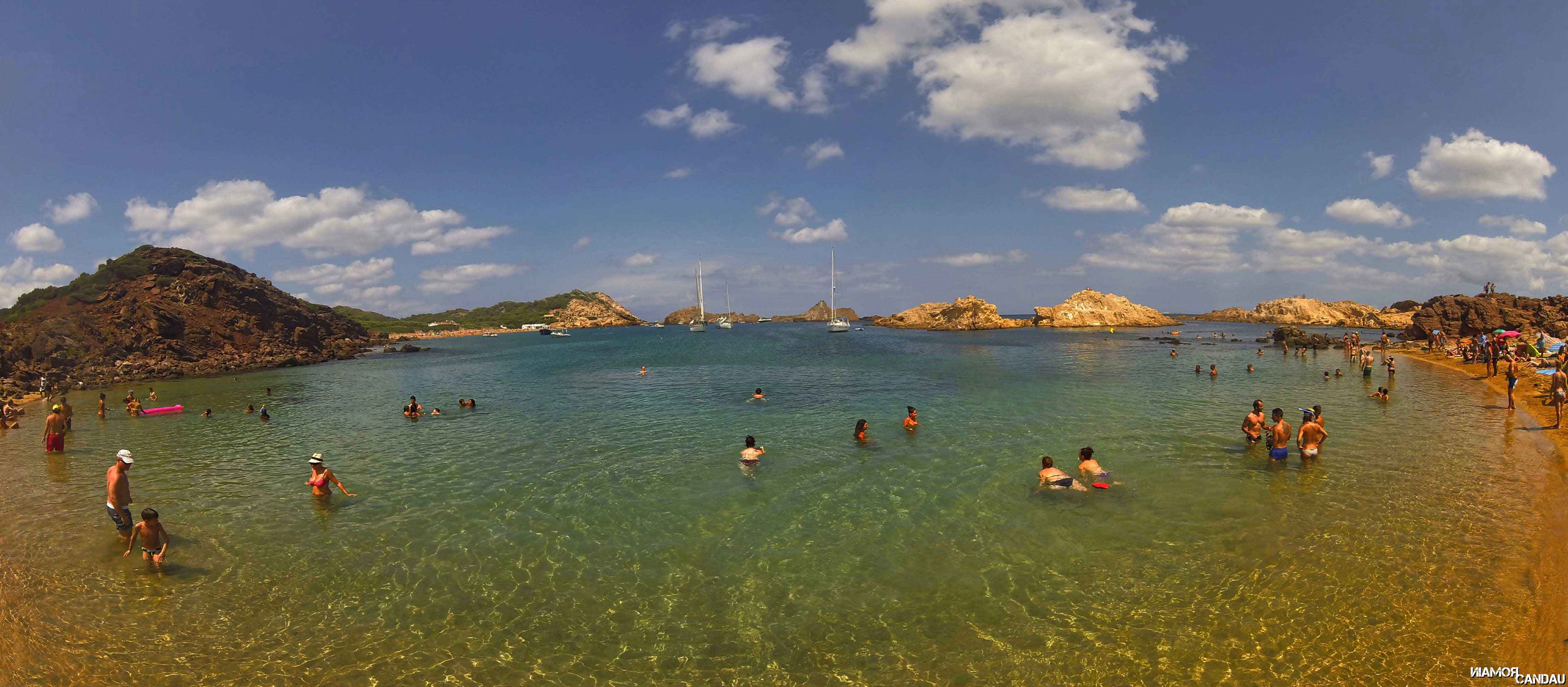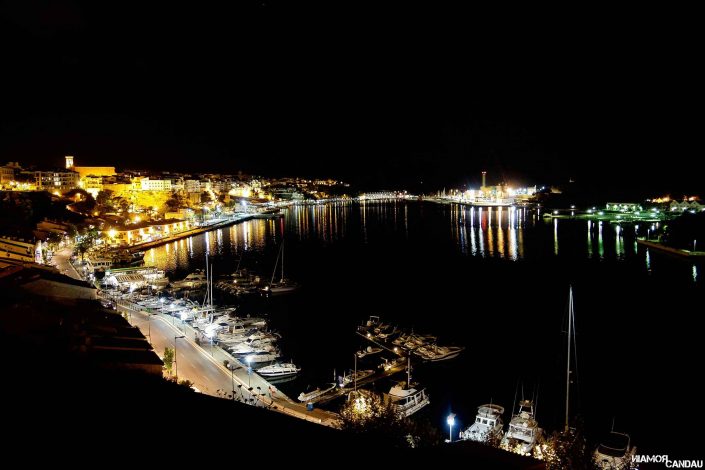This summer, Lucie and I left for a week in the Balearic Islands on the island of Menorca, the most preserved.
Why choose Menorca? We wanted to be able to walk around an island on a human scale and above all avoid the crowds and fiesta side that Majorca or Ibiza can have.
What strikes Menorca the most is the contrast between the beaches of the north and those of the south. The North is almost deserted (in the middle of August!!) and looks like Brittany (heat and transparent water in addition) while the South looks like Corsica or paradise islands (white sand, turquoise water, a lot of vegetation).
The island is not very big, it takes roughly 1 hour by bus from Ciutadella to Mahon (located from one end of the island to the other) to make the journey. There is not much to see inside the island except for a few villages (especially when local festivals are held). The interest of the island is obviously its coasts and its numerous coves. There’s about 200km of coastline so there’s plenty to do! I will take a look at the creeks (“calas”) where we went, just know that it is essential to bring a backpack with bottles and snacks inside each outing because it is (very) rare to have something to eat or drink on the spot.
A path called the Camí de Cavalls (horse trail) is the complete tour of the island. It is part of the Great Hiking Trail network and is divided into 20 sections. It makes it possible to reach some of the most inaccessible beaches in Menorca. Attention, if some parts of the Cami de Cavalls seoem accessible by bicycle, it is not said that it will be the same 200m later, we had the bitter experience. It is therefore not recommended to do so by bicycle.
Ciutadella
Ciutadella is the most beautiful city on the island. It used to be the capital of the island, now it is the second largest city on the island behind Mahon. The city is full of charm with its maze of shady lanes and small deserted squares.
The harbour is also worth a look with its few nearby palaces. The pier is the most lively place in the evening with its many restaurants (fish and seafood!) and the nearby market.
The interior of the city is very calm and colourful. There are sometimes a few people in the main shopping street, but it is enough to fork in the nearby alleys for calm to return. It’s very pleasant to stroll through the streets and the multitude of facades with their bright colours is a spectacle you won’t tire of.
Cala des Degollador (our stronghold)
Our base camp in Ciutadella was Hotel Cala Bona. The hotel is 10 minutes walk from the centre and the port. The back of the hotel looks directly onto the Cala des Degollador! The cala is very urban and very elongated (it goes half a kilometre inland), the sandy beach is 200m from the hotel but you can swim directly from a rocky platform located 10m from the hotel. A ladder (and yes, like at the pool!) is present to get in and out of the water. The water is crystal clear and it’s the perfect place to swim in the morning just after breakfast.
Book the Cala Bona Hotel in Ciutadella on Booking.comIt’s the ideal beach for those who like to swim and do lengths! No waves, no one in the water, 500m long…
Hotel staff often feed the fish and when you’re in the water, you can see them and there are quite an impressive number of them! The rocky platform is big enough to sunbathe but it’s less comfortable than the sand… Rocks are more accessible in height for those who like to jump (and that’s super cool!).
There is a swimming pool at the hotel entrance on the street side. The room is very clean, very quiet and overlooks the sea. In the evening, the sunset is fabulous! Breakfast is taken on the terrace overlooking the sea. Breakfast is very complete, there is something for all tastes: coffee, hot chocolate, tea, milk, fruit juices, croissants, breads, jam, nutella, cheese, tomatoes, eggs, delicatessen, cereals….
The staff is very friendly, they were good advice and a great help: I had caught 7 urchin spines in the toe (aie!) and I couldn’t remove the last spine (which had sunk too deeply), they gave me vinegar to apply on the wound to bring up the sunken spine. One hour later, I was able to remove the spine without any worries!
Cala Santandria (Sa Caleta)
Sa Caleta (small cala next to Cala Santandria) is about 25 minutes walk from the centre (15 minutes from our hotel). The beach is very small and there are a lot of people because of the many surrounding residences and other holiday clubs… The public is therefore quite familiar. The cala is long, narrow and not very deep which is reassuring for the children. The water is turquoise blue common to all the beaches of the south of the island. The beach being small, it is possible to go to settle on the rocks along the water. It is here that my foot met a sea urchin (be careful not to swim too close to the rocky walls…) So mixed memory and urchin apart, there is much better to swim on the island.
On the second day, we rented bicycles to go south to see Cala Es Talaier and Cala En Turqueta. We wanted to follow the Cami de Cavalls to go along the coast but impossible to do by bike. The path is far too rough. So we quickly reached the roads and tarred roads.
Here is the journey of our day: about thirty kilometers but it was hard!
Once you reach the Cala Es Talaier there are no roads, just forest paths with lots of sand or rocks! You might as well say that with the bikes it didn’t do it at all! So we made the whole part of the Cala Son Saura (1km before Es Talaier) to the Cala En Turqueta by walking next to the bikes!!
Cala Es Talaier
Cala Es Talaier is very difficult to access, which makes it all the more desirable! You can reach it by walking about 1km from Son Saura. We chose the rocky path that follows the water (by bicycle, not easy…..). It is better to have good shoes, go in flip-flops is not recommended. We arrive then on the right of the beach, a stone wall bars the path but steps allow to climb it without too much worry (with bicycles it is another story…).
The beach is paradisiacal: surrounded by trees, fine white sand, turquoise and transparent water… It is quite narrow (50m) but being isolated, you don’t step on it.
Cala En Turqueta
Cala En Turqueta is fairly easy to reach by road, which makes it a busy beach. There is a large carpark at 15 minutes walk from the beach (yes, you still have to walk a little, a beautiful beach is worth it! As far as we are concerned, we came by the cami de Cavalls from Cala Es Talaier. The path is pretty hard, it goes up and down severe! Walking shoes are mandatory! We did it on a bike (well, it was pretty close to the bike) and it was very loooong… Nevertheless the view from the path is splendid, the creek lets itself be seen from far away, it is envy!
The beach itself is quite wide (about 200m), it is separated in 2 parts by small rocks. Facing the sea, you have a path on your left (hidden by the palm trees of the Canary Islands), which runs along the water and leads to a rocky facade from where you can jump and have an overview of the beach.
Cala Algaiarens
Cala Algaiarens is located in the north of the island about half an hour’s drive from Ciutadella. It is served by the bus line 62 which also goes to Cala Morell. The beach is very wide, you can reach it from 2 paths.
We particularly liked this beach for its seabed. The north of the island being much wilder than the south, the presence of marine flora and fauna is more important. We were able to observe schools of colourful little fishes walking around nearby. On the other hand, always keep an eye on your towel because it is on this beach that I had my sunglasses stolen…
To the east of the beach, you can take a path that runs along the water and leads to another cala from where the view is sublime.
Cala Morell
From Cala Algaiarens we took the bus back to Cala Morell. The beach is surrounded by rocky cliffs on which luxury residences and villas have been built. The panorama is incredible and the coastal ensemble is unlike any other on the island. The rocky coast, cut by the wind, offers an almost lunar landscape.
Urbanization has remained rather limited, there are no large hotel complexes as one can find on the beaches of the Southeast. A staircase descends on the beach revealing villas more sublime each other. Prehistoric caves are also worth a look. The beach itself is quite rocky and very small.
Cala Galdana
We went through Cala Galdana because it is a necessary passage to go to Cala Mitjana. This is where the line 52 starts from Ciutadella and passes through Ferreries. We felt like we were in a gigantic summer camp. Large hotel complexes stand next to each other. The beach is very large but loses all its charm in the middle of these hotel complexes. The world is much more important there than elsewhere. In short, we hated it and took the footpath directly to Mitjana Cala in about 30 minutes on foot.
Cala Mitjana
Cala Mitjana is accessible by a forest path starting from the heights of Cala Galdana. The path winds through the middle of the pines and ends up revealing a translucent, turquoise water. It is Cala Mitjaneta which is unveiled to us, deserted and calm but its sandy beach is quite small. A small path overlooking the sea leads to Cala Mitjana, a little more isolated at the back. The beach is much larger and overlooked by large rocks.
It is one of the wildest beaches on the island. The flora is strongly present and gives the impression of being lost in the middle of nature. A coconut and pineapple salesman calls the crowd to quench their thirst.
The world is quite present despite the relative difficulty of access, which is finally logical because the beauty of the place is so magical. Large rocks make it possible to jump about ten metres high and enjoy a magnificent view of the crystal clear lagoon. Our big crush is the cave! Yes yes, it is possible to swim in a real cave! On the other hand, the entrance is quite narrow (but you have to walk several times) and it is quite dark inside. A rocky platform inside the cave allows you to get out of the water (and rest). It will remain like a highlight of the trip! Visiting a cave by swimming is really fun!
On the beach at the level of the rocks, a staircase shaped path leads up to the heights in the forest and leads to a promontory overlooking the beach. Magnificent view and change of scenery guaranteed!
In short, it is the most beautiful beach on the island!
Parque natural de s’Albufera des Grau
This natural park is located in the north-east of the island of Menorca. You can reach it from the bus line n°23 starting from Mahon. It is a vast nature reserve located at the mouth of the sea where marshes and lagoons form. The tour of the park is done quite fast, there are 3 more or less large courses. The view is completely different from the rest of the island.
We then went for a little walk to Es Grau, a pretty white village. The beach of Es Grau situated between the park and the village offers a nice panorama. It is from there that the Cami de Cavalls leaves, which leads to very wild beaches. The north coast of the island is much less frequented than the south. We were alone on the beaches in the middle of August! This is why the proportion of nudists is also higher there. The coast is very rocky, some beaches are infested with algae but are much more preserved.
Cala Tamarells
We stopped on this beach because it is one of the only beaches that is not infested with seaweed. We were alone on the beach, we thought we were at the other end of the world or at Koh Lanta. Once underwater, one quickly notices that the marine flora is much more developed than in the south. Fish are also more numerous but perhaps harder to see in the midst of underwater plants.
Bike ride from Fornells to Cala Pregonda
On Friday, we took the bus from Mahon to Fornells (line 41) to rent bicycles there. Our objective was to join Cala Pregonda, by the small roads through the fields. The bike ride is not easy, it goes up and down, until you arrive at a huge pebbled road that leads to Cala Binimel. As usual, as the Cami de Cavalls is not suitable for cycling, we walk beside the bike from Cala Binimel to Cala Pregonda (about 1km). Dragging the bike in the sand is not very pleasant…
Cala Binimel-Là
Cala Binimel starts from a lagoon that goes inland. When we arrive, we are greeted by ducks wading in the lagoon. A small wooden promontory leads to the beach. We continued our way because the beach was crowded, close to the car park…
Cala Pregonda
Cala Pregonda was the second big hit of our trip. The contrast of reddish rocks and turquoise water gives a striking spectacle. Small rocky islets emerge from the crystal clear water. Climbing on it, you can enjoy a nice view. It’s like being on the moon! You can see in the distance another beach that looks more peaceful.
In spite of the 20 minutes walk from Binimel, the beach is black of people. Passing behind the beach, you can climb a rocky hill and have an overall view between the two beaches.
Cala En Porter
Cala En Porter was the last beach of our stay… We had the plane in the late afternoon and it is one of the only beaches in the south easily accessible from Mahon by bus. The area is very touristic. There is a world-famous discotheque, Cova d’en Xoroi, which is nestled in a cliffside cave. The area is quite beautiful (more than I expected) and the beach, although crowded, is very pleasant. It is ideal for children because the water is not deep. It is surrounded by cliffs on which villas and hotels stand.
Mahón
Mahon, Maó in Catalan, is the capital of the island. Its particularity is that it has the largest natural port in the Mediterranean, an enclave more than 5 kilometres long. We stayed there from Wednesday to Saturday, the day we returned to France. We stayed at the hotel la Isla, a very charming little hotel about 10 minutes walk from downtown and 5 from the port. The staff were very friendly and the breakfast was great! The hotel has a bar-restaurant and this is where we had breakfast every morning. We were served at the table as guests of the restaurant. Hot chocolate, coffee, coffee, bread, jam, orange juice… at will and above all a delicious ensaïmada! (and sometimes several ensaimades when I was very hungry). For those who do not know, the ensaïmada is a sweet pastry (in the form of a snail) sprinkled with flour.
Book the hotel La Isla in Mahon on Booking.comThe city is very lively, the pedestrian streets are quite pretty (less than in Ciutadella nonetheless), it goes up and down frequently. There are many shops of avarcas, sandals typically minorcan as well as stalls of Gin Xoriguer and Pomada (Gin Xoriguer + lemon). The fish market is also worth a visit. In the evening, the port remains the most animated place with its many restaurants, its animations and its numerous yatchs docked.
Useful Links :
Bus lines (timetables, fares…)
Bus map
Book the hotel Cala Bona in Ciutadella on Booking.com
Book the hotel La Isla in Mahon on Booking.com
The video







